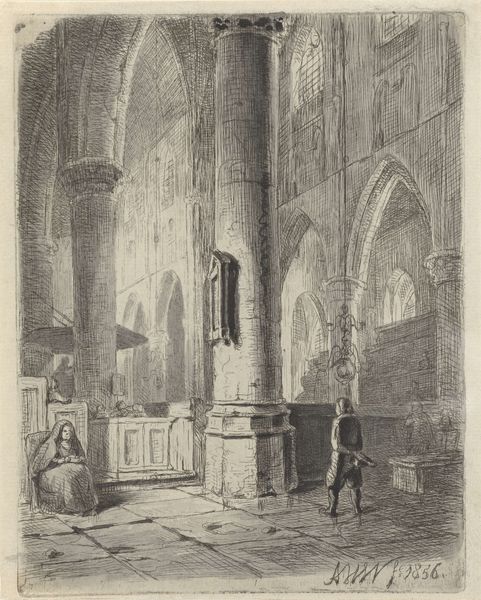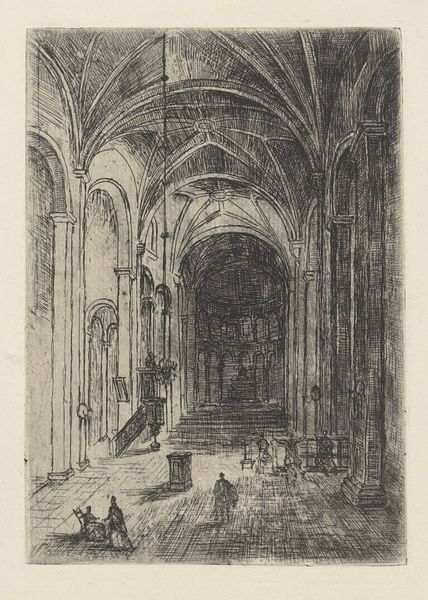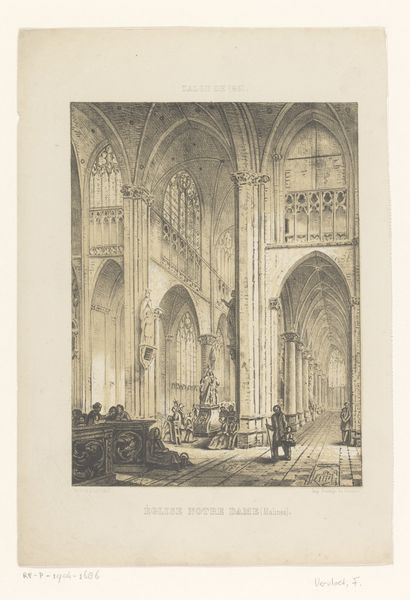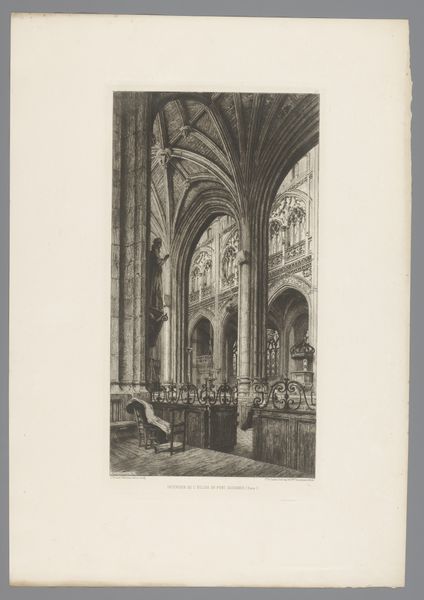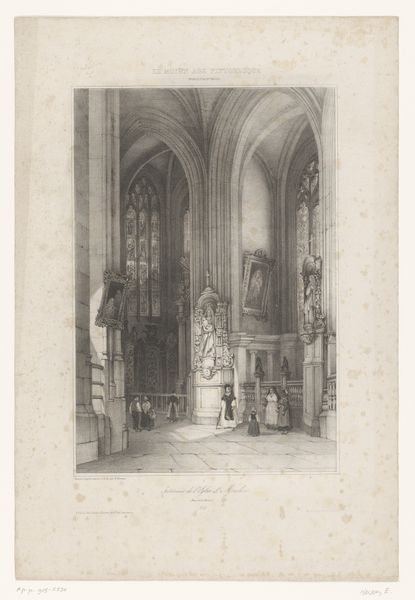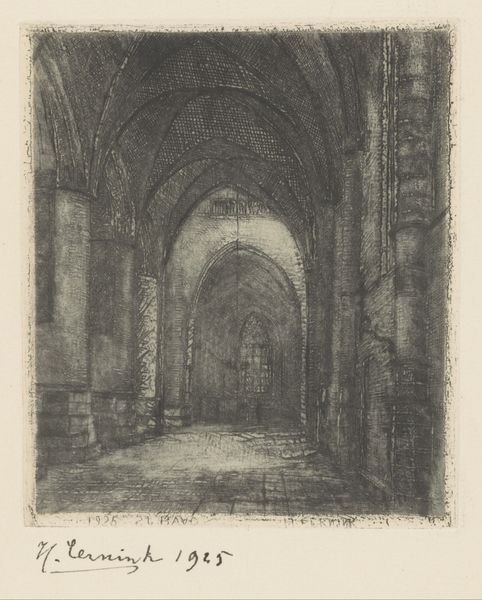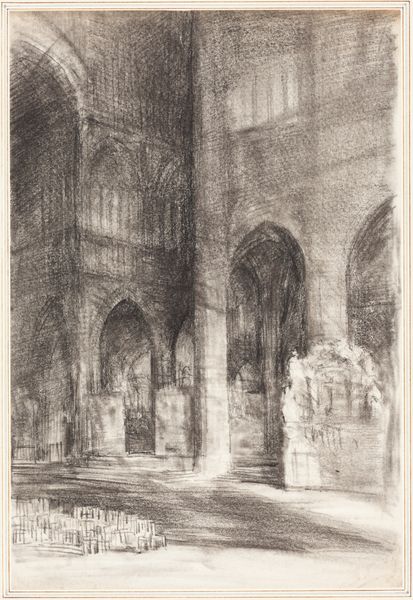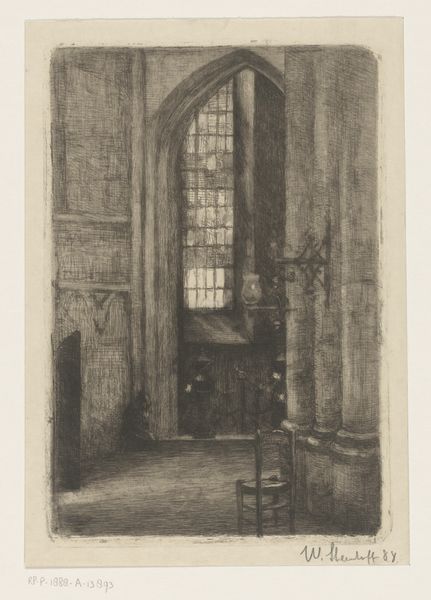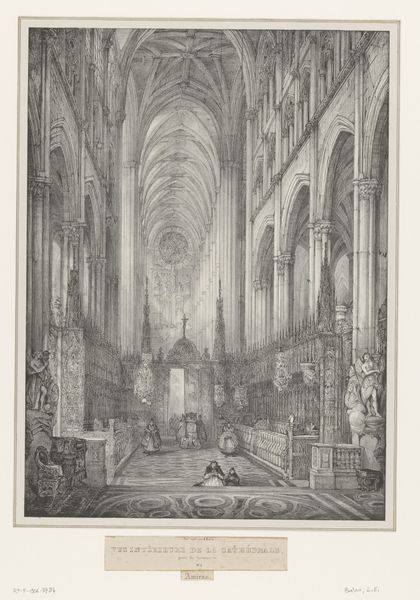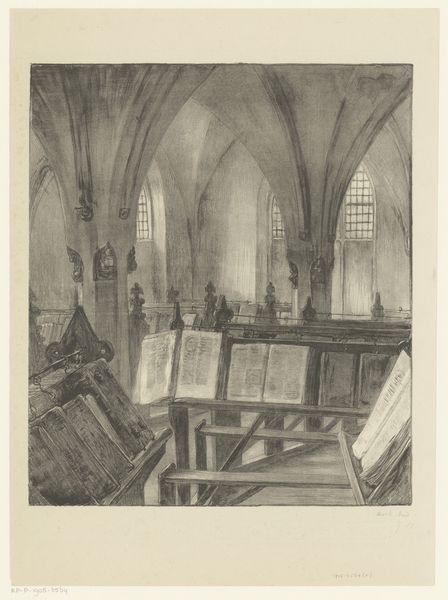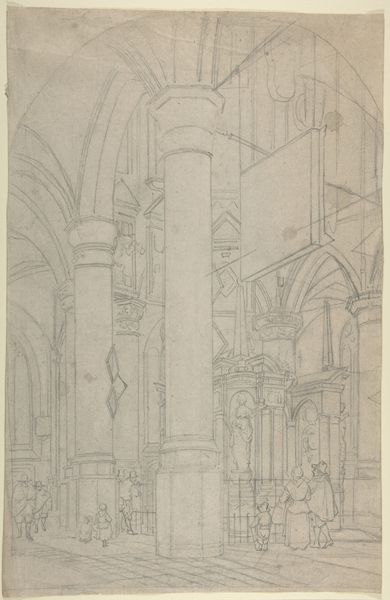
drawing, ink, pencil, pen
#
drawing
#
mechanical pen drawing
#
pen illustration
#
pen sketch
#
pencil sketch
#
old engraving style
#
landscape
#
perspective
#
figuration
#
form
#
romanesque
#
personal sketchbook
#
ink
#
sketchwork
#
pen-ink sketch
#
pencil
#
chiaroscuro
#
line
#
pen work
#
sketchbook drawing
#
pen
#
genre-painting
#
realism
Dimensions: height 132 mm, width 102 mm
Copyright: Rijks Museum: Open Domain
Editor: This is Adrianus Wilhelmus Nieuwenhuyzen’s "Kerkinterieur met een jongen en een zittende vrouw," created in 1856, using pen, ink and pencil. The intricate details and use of perspective create this incredible sense of vastness and stillness in what seems to be a Romanesque church interior. What kind of dialogue do you think Nieuwenhuyzen is trying to create between the architecture and the figures? Curator: Considering its socio-historical context, this work offers a commentary on the role of religion in mid-19th century Dutch society. The vast interior dwarfs the figures, underscoring a sense of individual insignificance before institutional power. The church itself becomes a character, almost. Look at how the lines emphasize height and the play of light and shadow. Do you think the artist intended a critique or simply a reflection of the period? Editor: It does feel like there's a sense of critique. The starkness of the lines, the limited detail given to the human figures - almost like they're afterthoughts. It’s less a celebration and more a study of how social spaces can define individual experiences, right? Curator: Precisely! And we can't ignore how images of church interiors served a public function in visualizing faith during a period grappling with modernity and secularization. The 'genre-painting' aspect blends into that as well, placing the everyday within the context of something greater. So, how might the contemporary viewer's reception differ from that of the 1850s? Editor: Well, maybe now we focus more on the artistic skill itself, the perspective and the composition. We are probably less invested in the religious implications. Curator: Yes. I think reflecting on its historical placement certainly enriches the viewing experience. Editor: Definitely! I appreciate gaining a new way to appreciate the dialogue between its form and context.
Comments
No comments
Be the first to comment and join the conversation on the ultimate creative platform.

